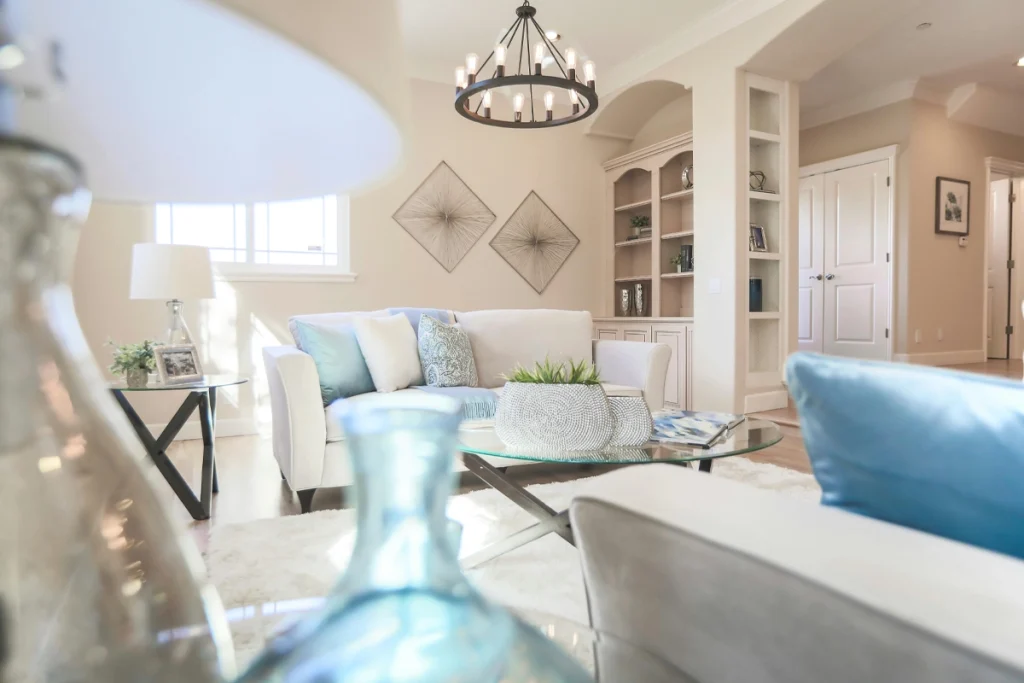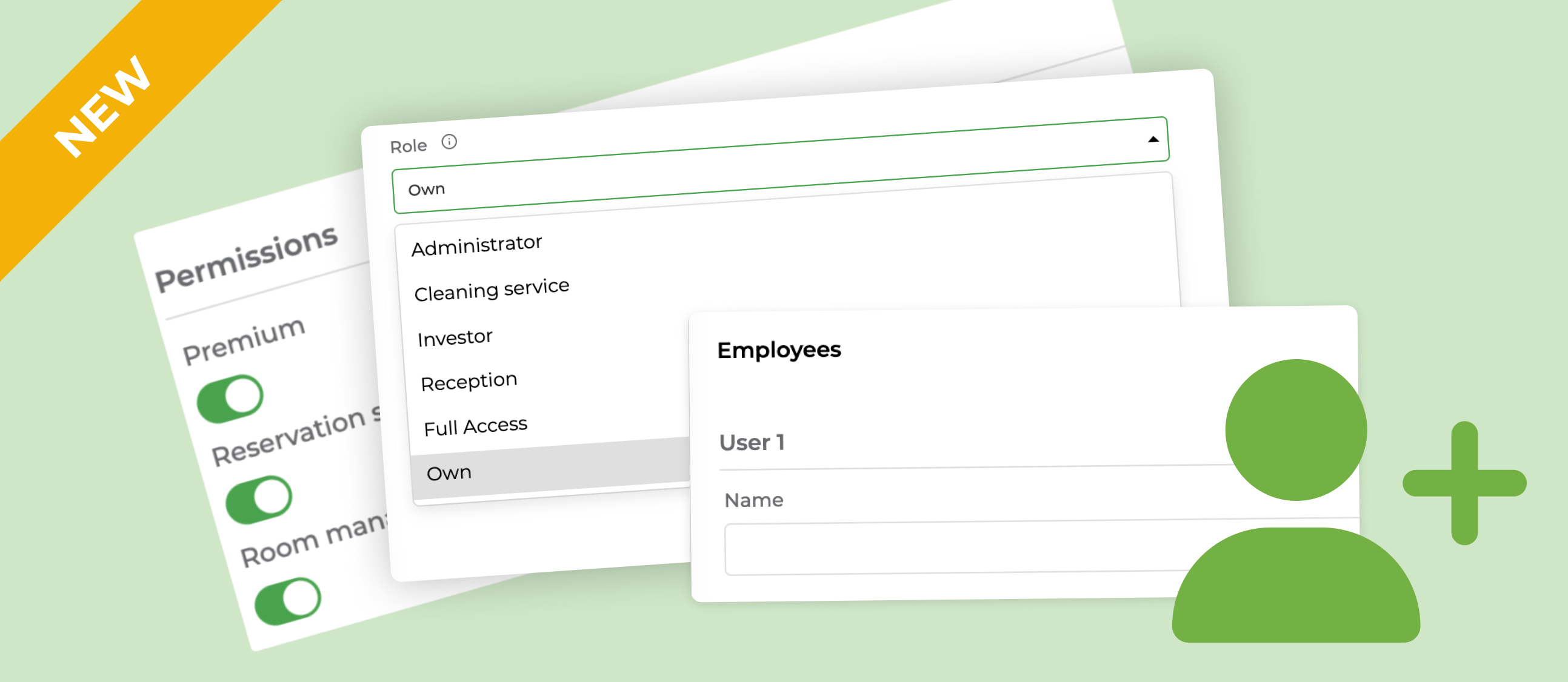
How to create compelling descriptions and images for short-term rental listings: examples and best practices
In the short-term rental industry, where competition is extremely high, the ability to create an offer that grabs the attention of potential clients and encourages them to make a reservation is crucial. A well-written property description and professional, eye-catching photos can significantly increase the chances of renting out your property. In this article, we will look at the best practices for creating descriptions and photos for short-term rental listings, and we will present concrete examples of effective solutions. We hope to inspire you to improve your own offer.
Property Descriptions in Short-Term Rental Listings
A property description is often the first contact a potential guest has with your offer. It determines whether the user decides to continue browsing or simply scroll past. That’s why it’s so important to capture interest from the very first sentence. Generic statements and clichéd phrases won’t be effective here—focus on originality and specifics.
– Identify Your Target Audience
When writing a description, it’s helpful to know who your main audience is. Why? You will prepare a completely different description for families with children compared to couples looking for a romantic weekend getaway. By knowing your target audience, you can better tailor the language, style, and content of the description, which will increase its effectiveness.
– Highlight the Unique Features of the Property
Every property has something that makes it stand out—whether it’s the location, the view from the window, a unique interior design, or proximity to tourist attractions. These are your key advantages and “marketing hooks.” Make sure these features are highlighted in the description. Focus on what makes your offer special and will help guests decide to choose this particular listing.
– Clarity and Precision
A property description should be creative, but at the same time, it should be clear and precise. Avoid overly flowery descriptions that might discourage reading. Instead, prioritize clarity of message and specific details. Ensure the description includes all essential information, such as the number of rooms, furnishings, available amenities, and rental conditions.

How to Write Rental Listings in 6 Steps?
Step 1: Create a Catchy Headline
A couple is browsing vacation rental listings on a laptop, analyzing property photos and descriptions before making a booking decision.
A well-written description and attractive photos are key to grabbing guests’ attention. Photo by @Gustavo Fring.
The headline is a crucial part of the description, designed to catch the reader’s attention immediately. It should be short, concise, and highlight the most important advantage of your property. Here are a few examples of effective headlines:
- “Cozy Apartment with Sea View – Perfect for a Romantic Getaway”
- “Modern Studio in the City Center – Close to Major Attractions”
- “Luxury Home with Pool in a Picturesque Area – Ideal for Families”
Step 2: Describe the Property Interior
In the interior description, focus on the most important features and functionality. Highlight the layout, comfort, types of beds, the quality of furniture, and available amenities such as air conditioning, a TV, or good Wi-Fi. It’s important that guests can easily imagine what their stay in your property will be like.
Step 3: Include Location and Nearby Attractions
For many travelers, location is one of the key factors when choosing a vacation spot or a short break. Describe how close your property is to main attractions, public transportation, shops, restaurants, and other amenities that might interest guests. If your property is in a quiet area, emphasize this as a benefit for those seeking relaxation. If it’s in a somewhat noisy city center, highlight the proximity to transportation and major city spots. Remember to focus on the positives.
Step 4: Focus on Guest Benefits
Highlight the benefits that guests will enjoy by choosing your listing. Do you offer free parking? Child-friendly amenities? Or perhaps your property has a beautiful garden where guests can relax, or a city view? Focus on what will make guests feel comfortable. It’s important not only to describe the features but also how they translate into benefits for the users.
Step 5: Avoid Overusing Adjectives
While adjectives can add color to a description, overusing them can make the text difficult to read and seem less credible. Instead of writing “beautiful, modern, luxurious apartment,” it’s better to focus on specifics: “an apartment with modern furnishings, a large bedroom, and a city view.” Adjectives should be used sparingly and highlight the real advantages of the property.
Step 6: Ensure Language Accuracy
Nothing ruins the impression more than spelling and grammatical errors in a description. Make sure your text is correct, easy to read, and free of typos. A professional and carefully written description builds trust and reflects the high quality of the listing.
How to Take Good Photos of a Short-Term Rental Property?
For some, the description, and for others, the photos, are often the first thing potential guests pay attention to. That’s why the quality of the photos is incredibly important. The balance between the importance of the description and the photos is 50/50. Professional, well-taken photos can greatly enhance the appeal of your listing and encourage users to make a booking. Make sure the photos are clear, well-lit, and show the property in the best possible light. However, be careful not to misrepresent the reality. Sooner or later, guests will arrive expecting what your photos show.
How to Take Photos of a Property?
When taking photos of your property, it’s important to follow a few basic principles:
- Lighting: Always photograph in natural light, preferably in the morning or early afternoon. Avoid artificial lighting, which can create unnatural colors.
- Photo Angles: Try to take photos from angles that best represent the space. Photos taken from the corner of a room usually show its size and layout better than those taken straight on.
- Tidy Up: Before the photo session, make sure the property is clean and organized. Remove unnecessary items that might distract attention.
- Details: Take photos of key details, such as comfortable beds, elegant furniture, or modern appliances. These details add prestige to the listing.

Remember to include enough photos to showcase all the important aspects of the property. In addition to standard photos of the rooms, bathroom, and kitchen, consider adding photos of features like a balcony, view from the window, garden, or nearby attractions. A variety of photos helps guests better understand what to expect and make an informed decision.
It’s a good idea to use photo editing software to enhance the quality of the photos, but avoid over-editing. Too many filters and unnatural colors can deter guests. Focus on adjusting brightness, contrast, and sharpness to make the photos as realistic as possible, rather than just making them look pretty.
Examples and Analysis of Effective Short-Term Rental Listings:
Example 1: Romantic Apartment in the Center of Poznań
Property Description: “Cozy apartment in the heart of Poznań, perfect for a romantic getaway. Modern interior, large windows with a view of the Old Town, and a comfortable king-size bed. Guests have access to high-speed Wi-Fi, a fully equipped kitchen, and a private bathroom. The proximity to cafes, restaurants, and tourist attractions makes this a perfect choice for couples.”
Analysis: This description clearly identifies the target audience—couples on a short stay. It highlights key features that would attract this type of guest. The mention of the city center location is a strong selling point, and the description is concise yet packed with important details such as amenities and location.
Example 2: Masuria – Luxury House with a Private Pool
Property Description: “Welcome to a luxurious home located by a lake in Masuria. The house offers spacious interiors, a private pool, a sauna, and a garden with a BBQ area. Ideal for families and groups of friends looking for a peaceful retreat. Nearby, you’ll find numerous hiking trails and the option to rent a motorboat.”
Analysis: This description focuses on luxury amenities, appealing to larger groups and more demanding guests. The exclusive access to the pool and sauna, which is a rare feature, is emphasized, making it a key selling point. The mention of local attractions also helps convey the atmosphere of the location.
A well-written description that highlights the unique features of the property and provides clear information, combined with high-quality photos, significantly increases the chances of attracting guests and securing bookings. Keep these best practices in mind, and your listings will stand out from the competition, drawing attention and building trust with potential customers.
Frequently Asked Questions:
1. What are the best practices for writing short-term rental listings?
Best practices include focusing on clarity and detail, highlighting the unique features of the property, and including information about the location, amenities, and proximity to tourist attractions. It’s also important to use language that resonates with your target audience and optimize the description for SEO to increase its visibility in search engines.
2. What type of photos best showcase a short-term rental property?
Photos that attract attention are those taken in natural light, from various angles, showing both the interior and exterior of the property. High-quality, well-lit, and properly framed photos that highlight the spaciousness and appeal of the rooms are crucial. Additionally, photos should emphasize unique features like modern amenities or the view from the window. If you struggle with photography, consider hiring a professional.
3. Is it worth investing in professional photography for short-term rental listings?
Yes, investing in professional photography is highly recommended, as photos are one of the key elements that attract potential customers. Professional photos can significantly enhance the appeal of the listing, which can lead to a higher number of bookings. Good photos effectively capture the atmosphere of the property and create an emotional connection with the customers.
4. How can short-term rental descriptions be optimized for SEO?
SEO optimization involves using relevant keywords that potential renters are likely to search for. These keywords should be naturally incorporated into the text and relate to the location, type of property, and amenities. Descriptions should also be unique, interesting, and attention-grabbing, which can improve their ranking in search results.
5. What elements should be included in short-term rental descriptions?
Descriptions should include information about the number of rooms, types of beds, available amenities (e.g., Wi-Fi, air conditioning), location (proximity to attractions, public transportation), and standout features (e.g., balcony with a view, modern kitchen). It’s also important to add emotional elements, describing the atmosphere of the place to help potential customers imagine their stay in the property.


